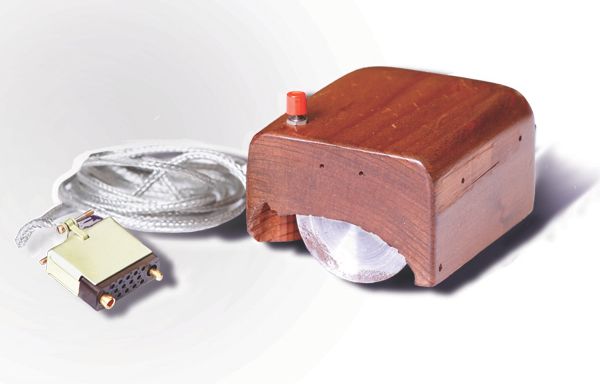Why the Mouse Should Be Buried With Its Brilliant Inventor
Douglas Engelbart died this week. But his most iconic idea lives on.
The venerable computer mouse, originally prototyped as a pine box with three buttons and metal wheels, was dreamed up by Englebart fifty years ago.
The mouse has been upgraded and re-envisioned — for example, they don’t use wheels or even trackballs anymore. Some have scroll wheels on top, or side buttons.
But the basic idea of moving a thing over here (to control a mouse pointer over there) lives on. Entire generations have grown up using this funky contraption.
We now suddenly find ourselves in a world of superior alternatives — multi-touch user interfaces (of which Android is the leading brand), voice control and dictation and others.
Yet habit and inertia keep us using Englebart’s brilliant but now-obsolete invention.
It’s time to bury the mouse.
Douglas Engelbart’s most brilliant work involved the replacement of obsolete interfaces with those that were much more natural for the human mind to interact with. For example, he envisioned graphical interfaces to replace command line ones, a mouse pointer to replace just typing commands and clicking on links and linked images as a replacement of entering in the address or file name of the document you wanted to see.
When Engelbart’s ideas migrated from Stanford to Xerox PARC to Apple to everywhere, they became widely used when most people were forming their first computing habits. In other words, the use of the mouse and the graphical user interface didn’t replace an old way of interaction for most people; it was their first way to interact.
Today, it’s clearly time to move on from the use of the mouse. Better interfaces are everywhere. And the only remaining barrier is user habit.
It’s possible, for example, for people to use only multi-touch devices as their computing devices. Android desktops are available now from multiple companies. Some of them, including the offerings from ACER and HP even come with a mouse. They apparently believe they won’t be able to sell them without mice.
Google’s own Chromebook pixel offers one of the best laptop experiences available. Instead of a mouse, you can just reach up and use the touch-screen. But it still has a USB port and a mouse driver.
Windows machines have touch screens, also — in fact, too many to list.
Yet there’s enormous resistance to the use of mouseless computing interfaces for devices larger than phones and tablets. People talk about “gorilla arm,” as if you would need to hold your arm out constantly to interact with the screen.
The reason for that resistance, I believe, is that people use touch interfaces the same way they use the mouse. They want to reach up and touch the screen to position the cursor or pointer, then type in their words or URLs or search query.
And many people are using touchpads on their laptops and even touchpads with desktops. But most average users are sticking with their old mice.
It’s not that people aren’t forming the habit of using multi-touch user interfaces. Our phones are taking care of that habit.
The trouble is that our replacements for mice tend to function in the same abstract way. Touchpads, for example, operate like mice in the sense that you touch over here to move something over there.
The trouble is that we’re not embracing voice interfaces and other options that together would make the mouse unnecessary.
We really should be using a seamless combination of voice, in-the-air gestures and direct screen touch. These technologies are all “here,” but they’re not being embraced quickly.
The truly big shift away from the mouse habit may happen in the form of virtual assistant interfaces. Google Now is one, Siri is another. Another category of app will pay attention to what we do, where we are and other contextual information and give us answers before we can even form the questions.
When these get better at anticipating our needs and can do things for us — buy stuff, book reservations, change meetings — and as they increasingly interact with us by talking, we’ll get in the habit of letting things happen on their own more, and also talking to our screens.
Douglas Engelbart was a giant of the computing revolution, and among his many contributions the mouse has truly changed everything for literally billions of people.
But Engelbart of all people would be the first to embrace the idea of moving on to the newer, better and more natural user interfaces.
The mouse was great, but it’s time to move on. We need an industry that does a better job integrating the new interface technologies we already have. And we need a user base willing to give up old habits.
Have you kicked the mouse habit? If so, how did you do it?



